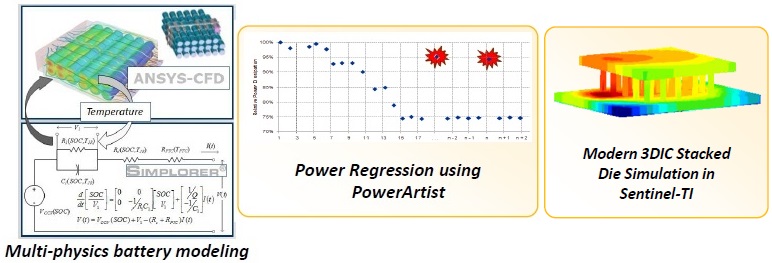If we take an insight into the semiconductor industry, we can easily find that mobile systems are the main drivers of this industry. The Smartphone business has remained at the top since a good number of years. Although the Smartphone sales growth has started showing a sign of stagnation, it is still a main contributor with a solid base in the overall semiconductor revenue. What is the other emerging area? I do not need to tell the obvious, the IoT. Now everything needs connectivity among them, and that’s half baked if not connected with a Smartphone. No wonder smart mobile devices seem to be a business everyone wants to get into. And there are enabling companies providing tools to design the best, robust mobile devices.
What are the key components that go into a modern mobile device? There are many – antenna, battery, different types of sensors, modems, MEMS, wireless charging circuitry, processors, memories, camera, imaging, display, wi-fi, GPS, and so on. The device is complex and has stringent requirements of high performance, low power, low TDP (Thermal Design Power), high reliability under different environments, and so on. Designing such devices or components requires various kinds of simulations to estimate and verify various parameters of a design at different levels including chip, package, electronic board, and even mechanical chassis. It feels great when a single company provides a suite of highly capable simulation tools which can provide a complete integrated solution for simulation of designs for mobile devices.
During 52[SUP]nd[/SUP] DAC, ANSYS along with their customers and partners presented solutions for several design requirements which demonstrate their simulation tools’ calibre in providing the right solution for designing high performance, high reliability mobile devices.
It’s great to hear from SMDH, a company in Brazil that by using RTL driven power integrity flow with PowerArtist for their UHF RFID digital baseband design they could reduce the power consumption by 82%.
Similarly ANSYS has state-of-the-art tools for power delivery optimizations from PCB to package and chip level. They provide an integrated solution for the complete system; system-aware chip as well as chip-aware system solutions. The power noise can be accurately predicted at the PCB level as well as on-chip. A guided methodology can be used to reduce the noise as much as possible.
For mobile devices, battery modeling is an interesting proposition. If a battery can be modelled along with the device where it will be used, nothing like it!

ANSYS Simplorer is a multi-domain, multi-technology simulation system that enables simulation of complex power electronic and electrically controlled systems. ANSYS HFSS has a gold-standard full wave EM field solver. It can automatically generate an efficient and accurate mesh. ANSYS CFD provides fluidic flow analysis capability for designing appropriate structure of a device. To extend the battery life and reliability, the power and thermal budgeting can be done through a set of tools. Power regression can be obtained through the use of PowerArtist and power, noise and reliability signoff can be done by the industry standard RedHawk. There is Sentinel-TI for thermal simulation of 3DIC stacked die.

Power and signal integrity are the key requirements for mobile devices. Noise margin need to be evaluated accurately. ANSYS Q3D provides 3D and 2D EM field simulations for electronic structures. The Q3D and HFSS can be used to evaluate the flow of signals. Sentinel-SSO is used for I/O DDR power, noise and timing analysis. RedHawk can be used to provide accurate IR drop analysis.
A variety of simulation tools on ANSYS simulation platform provide a complete solution for simulation driven design of mobile systems. Different aspects take prime roles at different stages of the system design. For example, at the starting micro-architecture stage power budgeting and reduction takes the prime consideration; at the IP validation stage power delivery and model generation is prime; at the SoC integration stage IR drop, reliability and ESD is critical. The system integration deals with power and signal integrity and thermal analysis at the system level. Then the system design needs to have antenna and wireless power transfer circuits integrated.
ANSYS’ multi-physics simulation platform is quite powerful and caters to a wide range of industry segments. It includes a number of tools for electronic, structural and fluidic simulations involving electrical as well as mechanical aspects of a variety of products for various applications including electrical, electronics, automotive, aerospace, consumer, and more.
Pawan Kumar Fangaria
Founder & President at www.fangarias.com







Comments
0 Replies to “A Complete Simulation Platform for Mobile Systems”
You must register or log in to view/post comments.